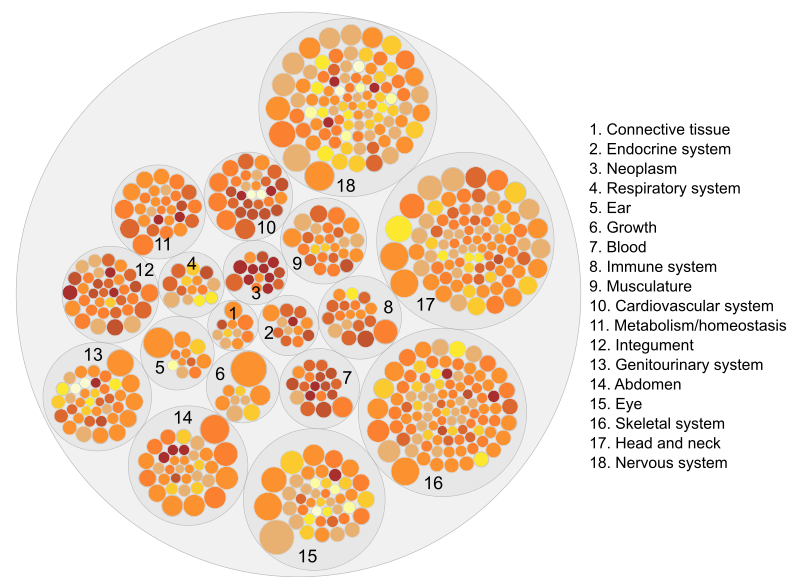Clinical signs are fundamental tools in clinical practice for disease diagnosis. They are also very valuable in biomedical research for the study and characterization of pathological processes. We have observed that genes associated to clinical signs of genetic diseases are not randomly distributed in the human interactome, but tend to form 'neighborhoods'. These neighborhoods can sometimes overlap, revealing molecular mechanisms that are common to distinct clinical signs or clinical signs and complex diseases.
Given the organization observed, novel genes associated with clinical signs could be predicted from the interactome with network-based approaches previously used for the prediction of disease-genes. We have compared two algorithms (RWR and DIAMOnD) for this purpose, obtaining better global results with RWR. We have studied several factors that affect performance: number of genes involved in the disease (mono- vs. oligogenic diseases), mode of inheritance, type of clinical sign and gene function.
